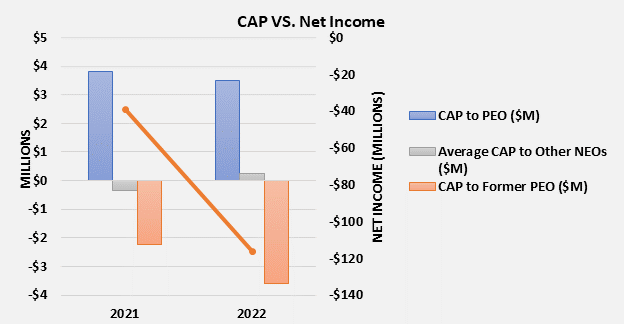
KPMG LLP
PO Box 10426 777 Dunsmuir Street
Vancouver BC V7Y 1K3
Canada
Telephone (604) 691-3000
Fax (604) 691-3031
Report of Independent Registered Public Accounting Firm
To the Shareholders and Board of Directors
ElectraMeccanica Vehicles Corp.:
Opinion on the Consolidated Financial Statements
We have audited the accompanying consolidated balance sheets of ElectraMeccanica Vehicles Corp. and subsidiaries (the Company) as of December 31, 2022 and 2021, the related consolidated statements of operations and comprehensive loss, changes in stockholders’ equity, and cash flows for each of the years in the two-year period ended December 31, 2022, and the related notes (collectively, the consolidated financial statements). In our opinion, the consolidated financial statements present fairly, in all material respects, the financial position of the Company as of December 31, 2022 and 2021, and the results of its operations and its cash flows for each of the years in the two-year period ended December 31, 2022, in conformity with U.S. generally accepted accounting principles.
Change in Comprehensive Basis of Accounting
As discussed in Note 2 to the consolidated financial statements, the Company changed its comprehensive basis of accounting from International Financial Reporting Standards as issued by the International Accounting Standards Board to U.S. generally accepted accounting principles effective with the preparation of the consolidated financial statements as of and for the year ended December 31, 2022. As a result, U.S. generally accepted accounting principles were applied retrospectively to the consolidated balance sheet as of December 31, 2021, the related consolidated statements of operations and comprehensive loss, changes in stockholders’ equity, and cash flows for the year ended December 31, 2021, and the related notes.
Basis for Opinion
These consolidated financial statements are the responsibility of the Company’s management. Our responsibility is to express an opinion on these consolidated financial statements based on our audits. We are a public accounting firm registered with the Public Company Accounting Oversight Board (United States) (PCAOB) and are required to be independent with respect to the Company in accordance with the U.S. federal securities laws and the applicable rules and regulations of the Securities and Exchange Commission and the PCAOB.
We conducted our audits in accordance with the standards of the PCAOB. Those standards require that we plan and perform the audit to obtain reasonable assurance about whether the consolidated financial statements are free of material misstatement, whether due to error or fraud. The Company is not required to have, nor were we engaged to perform, an audit of its internal control over financial reporting. As part of our audits, we are required to obtain an understanding of internal control over financial reporting but not for the purpose of expressing an opinion on the effectiveness of the Company’s internal control over financial reporting. Accordingly, we express no such opinion.
Our audits included performing procedures to assess the risks of material misstatement of the consolidated financial statements, whether due to error or fraud, and performing procedures that respond to those risks. Such procedures included examining, on a test basis, evidence regarding the amounts and disclosures in the consolidated financial statements. Our audits also included evaluating the accounting principles used and significant estimates made by management, as well as evaluating the overall presentation of the consolidated financial statements. We believe that our audits provide a reasonable basis for our opinion.
35


